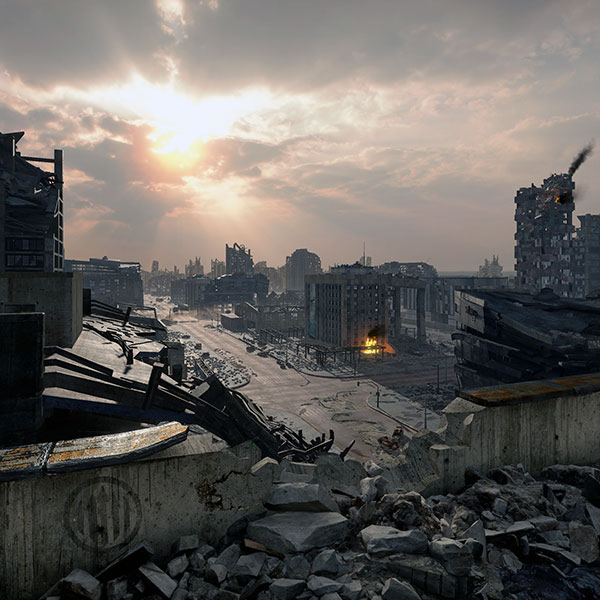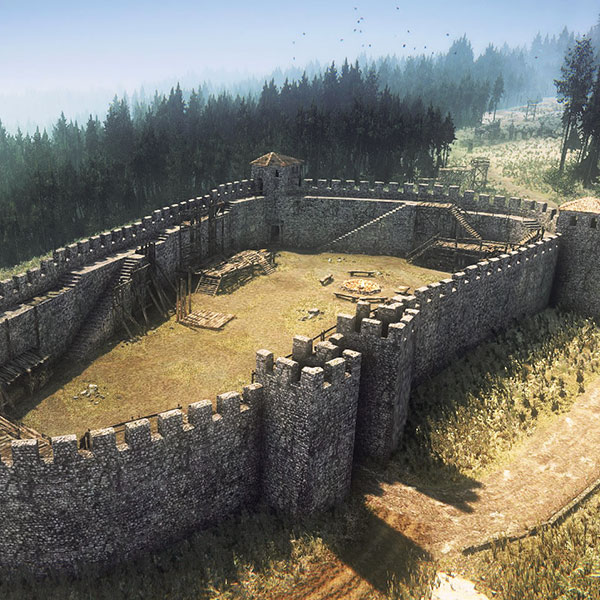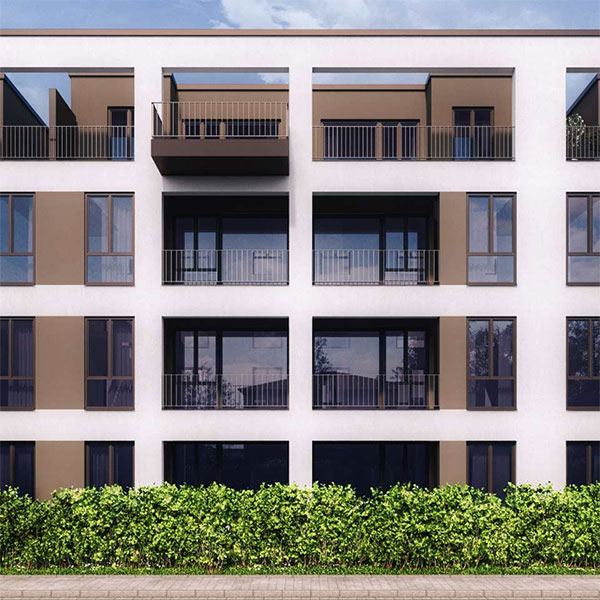Identity
Archydra GmbH is a creative studio located near Munich, Bavaria, that has a unique approach and skill set. Think of it this way: imagine a secret lab, where great things happen. Things of certain context. In our case, that context is graphics-intensive projects with a primary focus in three-dimensionality (3D-ness, if that’s even a word). Do we shoot videos and do compositing? Yes, we can!.. but that doesn’t get our ticks ticking. Can we make a virtual-reality video game for your brand’s new super awesome product? Now we’re talking! Can we 3D-model buildings and render cool images for your new development project in this super-awesome town? Been there, done that! Also, we can make those buildings in virtual-reality too. Can we 3D-scan this interesting object you have? Yes, please; just say the word. Did we mention we can make it in vir.. we probably did.
– But why is it a “secret lab” then? I’ve seen others do what you’ve described!
Thank you for asking! It’s “secret”, because, first of all, we don’t let just anyone in. We usually need a challenge. Preferably, someone out there said it was impossible. Have a project like this? Tell us! We can make it happen.
Second, then, it’s a “lab”, because aside doing things here, we also research new and better ways of doing things; ways of improving things. We also research new things we can do. And also, bunch of other things too.. You get the idea. This goes especially for our software and interactive development and the ways we can get better 3D-ness (it has got to be a word) in there.
Whether or not you’d like to knock on our lab’s door is up to you. If you do you’ll need a password. Here it is. The password is: “I’m not sure if it could be done, but I have this dream, you see..”.

Mission
Archydra GmbH offers a non-linear, artistically-evaluated approach to delivering our services. We focus on finding and executing what best suits you and your needs, rather than placing projects down an assembly line. Nonetheless, our quality standards ensure everything we deliver makes the right impression. At the same time, we forge our work retaining a unique artistic look. Our goal is to make sure your dream becomes a vision, a vision that will inspire people to follow you and your ideas.
Architectural Visualization has been in our services list since day one. As with everything we do, our approach is artistically-driven. We follow methodology and tradition, but we focus on the final product and it’s impact, rather than the process. We are capable of working in various styles and invoke different moods through our work. We like to experiment, improve and discover; never to copy.
We offer 3D Scanning for objects of various kinds, including people and characters. With years of experience in scanning, scan data clean-up and processing, we have the right skill to bring pieces of reality into your digital project. Furthermore, we have the right expertise in 3D modeling and texturing, ensuring the objects will look just as real once digitized.
Archydra GmbH offers Interactive Content production services. This enables us to extend our 3D Scanning and Visualization services and help you reach new grounds and audiences. We focus on real-time content using video game engines running on all kinds of standalone and mobile platforms. Examples of such projects are virtual walks, 3D content viewers, product placement & promotional games, interactive historical guides, virtual realities & simulations and much more. We are always open to developing new and unique ways to leverage your success.
VR, Real-Time, Interactive & Mobile Apps
The raising accessibility to consumer electronics has led to new ways of promoting and advertising businesses and products. Mobile phones, tablets, game consoles and virtual reality headsets now offer clever and intuitive ways for immersing audiences in getting to know you and your products.
With us being a secret lab and all, we can’t really cash in on the recently popularized term app development agency. We are a studio. We also like to focus on software, where graphics are an integral part of the product. This sets us apart. Naturally, we can make informative and online service-based apps. It’s just that real-time software is what we’re really good at. We can produce and incorporate heavy and complex 3D graphics and optimize them, and the software, to device-native frame rates. And beyond; way beyond.
Our team has been doing real-time architectural visualization since before CryEngine and Unreal became available outside game modding. We are capable of working with all major engines, depending on what best suits your project. Naturally, we utilize modern interaction devices such as Oculus Rift, RealSense & Leap Motion. Yet, we know well a product must never rely solely on another product. We offer truly mufti-platform applications that work and look great on kiosk stands and mobile devices. This enables you reach wider audiences, and of course saves you costs. Real-time interactive projects can also be combined with our other services as a package. A good example is architectural renderings and real-time walk-throughs of the same development project. We use cross-medium workflows to cut development time and maximize budget efficiency.
Archydra GmbH also focuses on making real-time projects and apps for science, simulation and education. Some examples we have worked on are historical interactive guides, training simulators and product viewers. We like to combine our skill-sets and expertises and offer unique virtual products.
A Matter of Engines
Modern real-time software development all depends on a Graphics Engine (aka Game Engine). To a large extent, the engine defines the approach and, let’s be honest, the outcome as well. There are a number of websites and forums where threads such as ‘Which is the best game engine today”, etc., etc. pup-up every now and then. We’ve heard it all. There are also quite a few to choose from: Unity 3D, Unreal Engine, Cry Engine, Lumberyard, Unigine.. Ex-multi-million dollar engines are now within our reach and this is a time which is quite exciting for us (and it should be for you too). Given a vast amount of time and resources, all of the major game engines available to the public today have proven capable as a tool-of-choice in producing high-end AAA (“triple-A”) graphics and game titles.
When working on a smaller project, things are different. Depending on the budget, time-line, type of project and priorities, choosing the right engine and the right approach are crucial. Sure, any tool can probably get the job done. The keyword here is efficiency. Given the diversity of our previous interactive projects, we have the experience and the know-how to offer development in three different engines. These are: Unity 3D, Unreal Engine (aka UE4) and Amazon Lumberyard. We strongly believe these cover the majority of 3D / real-time / interactive projects and depending on the “job” we power-up whichever would be most efficient.

Unity 3D
Unity 3D is easily world’s most popular game engine. It offers unmatched flexibility and agility when developing all sorts of real-time projects. It’s no surprise it’s what we use most of the time. We have successfully used Unity to develop projects ranging from educational Kinect-based games to kiosk software taht has to run 24 hours a day. It is also our number one choice for mobile games and apps. With our own graphics pipeline adjustments and custom shaders, we’ve also relied on Unity for our latest Virtual Reality projects. If you’d like to know more, head out to the portfolio sections to check out the results!

Unreal Engine (UE4)
Unreal Engine has been around for quite a while (we’ve been with it since UDK came out). It has always provided solid graphics that can be fine-tuned to perfection. It was also among the first engines to incorporate physically based rendering. Among other things, UE4 has become the engine of choice for real-time architectural visualization projects. Unreal Engine is capable of delivering beautiful results on tight deadlines. It is also great for all sorts of product visualizations and real-time graphics renderings. In other words, if project has to look good (and there is plenty of time to do it) then UE4 is likely the best bet.

Amazon Lumberyard (CryEngine spin-off)
When the going gets tough, the tough get Lumberyard. That’s the only way to describe what this engine is capable of. Amazon Lumberyard is based on Crytek’s CryEngine, which has always been on top of the game. Early CryEngine versions, however, were very tightly tailored to Crytek’s game development pipeline. When Amazon bought a CryEngine tier and created Lumberyard, they also promised to make their “new” engine more accessible. Despite the incredible graphics quality it can deliver, working with Lumberyard is still slower and requires more effort. Hence, we use it for high-end budget projects.
Ad-App Cookbook
At first glance it might be difficult to spot what kind of software (Apps) we do. The answer is easily “any”, but that’s not very informative. We’ve developed a number of games and larger deployment-intended applications, which are products on their own. An interesting part of what we’ve created though, are the advertising and event apps. Those are interactive experiences intended to entertain visitors and attract passengers. These apps have often had tight budgets and deadlines, and no design documents or parameters whatsoever. We’ve assembled most of them based on few loose ideas or comments by the clients. The rest was up to us. No, we don’t have a psychic department that helps us read people’s minds. Even if we did, that wouldn’t do much good. That’s because given the variables such as budget, deadline, type of event, type of brand, the likely audience that’s going to experience the app and many others, there is pretty much one answer to what the right app should look like. How do we do it then? Well, there is an unwritten formula to it that takes those variables and computes an answer, you see. Or, if you’d like, a recipe. We call it the successful app recipe.
Gadget Preference
We can’t talk about interactive experiences without mentioning the way users interact with them. It’s part of the successful app recipe. Both our deployment-intended projects and smaller event- or advertising- intended apps were often entirely built around an intended user interaction experience. In order to offer new and exciting experiences, we need to know how to offer new and exciting, but even more importantly, fluid and natural user interaction. Making “new and extincting” user interaction is actually quite easy. One could go on a tech-blog, screen the first few pages for some new cool tech gadgets and haptic devices, buy them out, put them on their services list and try to convince clients these are the next best thing ever.
Making those new interaction experiences “fluid and natural”, now that’s the hard part. It involves going through the aforementioned step one, yes, but also understanding, testing, researching the device and spending a whole lot of time improving the experiences with it. This is hard work that we do here. Going the extra mile in ensuring we fully understand what we’re dealing with is what has helped us deliver fully functional experiences that simply feel the way they should be.
Here is a small list of some of the gadgets and devices we’ve made great interaction experiences with. You’ll also notice APIs listed here. Even though these are not really “gadgets”, we consider them a way to improve and offer completely new user interfaces (i.e. touch-free user interaction with OpenCV). When used in innovative and creative ways, the old devices, some of which make appearance here, have provided quite exciting experiences as well.
Oculus Rift
Kinect 1 ( Xbox 360)
Leap Motion
HTC Vive
Kinect 2
AR Marker Tracking
Vive Tracker
WII Remote
OpenCV
A Word About the ‘Other Stuff’ We Do
From all that talk about software development, it might seem like we have forgotten we do other stuff as well. Archydra GmbH started as an architectural studio and our early 3D-scanning assignments date even before the company was grounded. Nowadays we spend more time on integrating the results of those skills into interactive experiences. However, a lot of what we do is still creating architectural visualizations and, occasionally, digitalizing real-world objects.
Many of our interactive app demos are also available upon request. Contact us with your request and you might be surprised to learn we’ve likely done something similar in the past!
Among the companies we’ve done successful projects for are: BMW, Raiffeisenbank, Eurobank AD, bTV Group & Siemens. However, we are where we are today, thanks to each and every person who entrusted us over the years. We know that it is You who moves us. You and Your brand, no matter how big or small, impacts what we do and helps us move forward.





